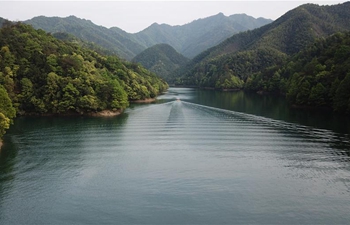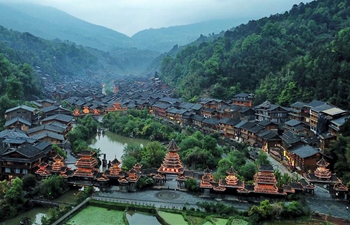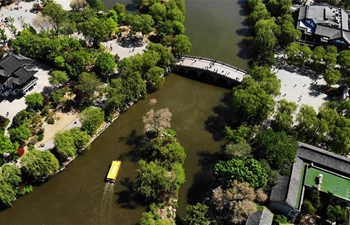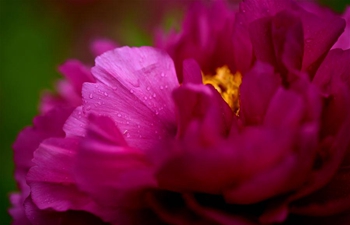by Xinhua writer Luan Xiang
BEIJING, April 16 (Xinhua) -- The world's last known female Yangtze giant softshell turtle (Rafetus swinhoei) has died after a failed artificial insemination in Suzhou Shangfangshan Forest Zoo in eastern China's Jiangsu Province.
Only three specimens of the species remain alive, including one male in captivity at the Suzhou zoo, China, another male in Dong Mo Lake, Vietnam, and another one in Xuan Khanh Lake in the outskirts of Hanoi, gender unknown.
With the female gone, the survival of the species is in dire jeopardy, according to conservationists.
Human intervention has proven to be rather powerless when it comes to species extinction while protecting habitats is the most effective method to preserve endangered wildlife, experts said.
On April 12, a research team performed artificial insemination through surgery onto the female softshell turtle. At around 6 p.m. the anesthetized specimen woke up and immediately showed abnormalities. She was announced dead after 24 hours of unsuccessful intensive treatment.
Yangtze giant softshell turtles are one of the biggest freshwater turtles on Earth. The adult can grow a shell larger than 1 meter in length and weigh over 100 kg. Their life span is recorded to reach 400 years, while the dead female was believed to be over 90 years old and fertile.
The critically endangered species is known to have inhabited the Yangtze and Red River for millions of years. It was the inspiration of the mythological creature "Bi Xi" or "Ba Xia," the sixth son of the dragon in ancient Chinese belief.
Though the earliest record of the Yangtze giant softshell turtle dates back over 3,000 years ago, and the image of Bi Xi is commonly seen carrying ancient monuments in traditional gardens, the species was only distinguished from other rafetus and recognized in the late 1980s.
Professor Zhao Kentang with the Suzhou Railway Normal Institute's Biology Department first discovered the distinct features of Yangtze giant softshell turtle in 1988, and his finding was backed by other Chinese scientists in 1994 for the species to be recognized.
In 2006, a project to protect the extremely endangered species was launched by the Wildlife Conservation Society (WSC) and Turtle Survival Alliance (TSA) with Chinese zoos. In 2008, a female was found in Changsha was moved to Suzhou in a matchmaking attempt.
The female and her 100-year-old groom mated over the years and laid fertilized eggs on several occasions but none of them hatched.
Since 2015, a research team led by Australian zoologist Dr. Gerald Kuchling began to obtain sperm from the male to fertilize the female. Starting in 2016, the team began to perform surgery on the female to inseminate the artificially-obtained sperm.
Including the experiment on April 12, none of the attempts succeeded.
Dr. Xie Yan, former director of WSC projects in China, expressed deep regret at the passing of the last known female of the species.
"When it comes to saving species from extinction, humans are truly powerless," she wrote, regretting that 13 years of conservation efforts couldn't change the fate of the Yangtze giant softshell turtles.
The most effective and scientifically sound way to protect wildlife is to protect the habitat and the integrity of its ecosystem, urged Zhao Zhonghua, chief representative of the World Animal Protection, a United Nations general consultative organization, in China.
"When the wholesome natural habitat is well protected, it is not only one species that will benefit but the entire biosphere including natural resources like water and all species that form part of the ecosystem," he said, adding that the improvement of the natural environment brings benefits to the livelihood of mankind.

















